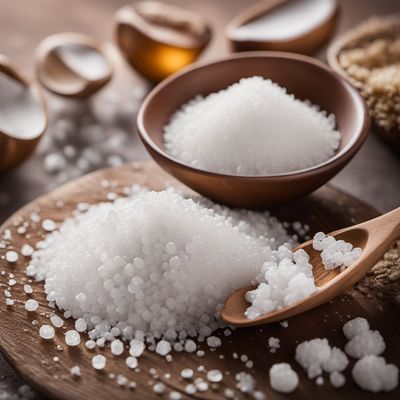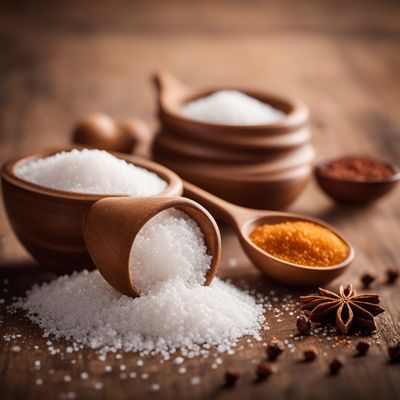
Ingredient
Salt, iodised
"The Essential Mineral: Unveiling the Power of Iodised Salt"
Iodised salt, also known as table salt, is a fine-grained crystalline substance that is primarily composed of sodium chloride. It is typically white in color and has a granular texture. Iodised salt is widely used in cooking and baking due to its ability to enhance the taste of dishes. It dissolves easily and evenly, making it a versatile ingredient in various culinary applications. Its fine texture allows it to blend seamlessly with other ingredients, ensuring a balanced flavor profile. Additionally, iodised salt is an essential source of iodine, a vital mineral that supports thyroid function and helps prevent iodine deficiency disorders.
Origins and history
The practice of iodising salt began in the early 20th century as a public health initiative to combat iodine deficiency. Iodine is an essential nutrient that is crucial for proper thyroid function and overall health. The first successful iodisation program was implemented in Switzerland in 1922, followed by the United States in 1924. Since then, iodised salt has become a staple in many countries, particularly those where iodine deficiency is prevalent. Today, iodised salt is widely available and used globally to ensure adequate iodine intake.
Nutritional information
Iodised salt is a good source of iodine, providing approximately 45 micrograms of iodine per gram. It also contains trace amounts of other minerals, such as calcium, magnesium, and potassium. However, it is important to note that excessive consumption of iodised salt can contribute to high sodium intake, which may have negative health effects.
Allergens
Iodised salt does not contain any known allergens.
How to select
When selecting iodised salt, look for brands that are certified by reputable organizations to ensure quality and accuracy in iodine content. Check the packaging for the "iodised salt" label and verify that it contains the recommended amount of iodine per serving.
Storage recommendations
To maintain the freshness and quality of iodised salt, it is best stored in an airtight container in a cool, dry place away from direct sunlight. Avoid exposure to moisture, as it can cause clumping.
How to produce
Iodised salt is typically produced through a process called iodisation, where potassium iodide or potassium iodate is added to salt to increase its iodine content. This process is usually carried out by salt manufacturers and requires specialized equipment and expertise.
Preparation tips
Iodised salt is a versatile ingredient that can be used in various cooking techniques, such as seasoning, marinating, boiling, and baking. It is important to use iodised salt in moderation to avoid excessive sodium intake. When seasoning dishes, it is recommended to add salt gradually and taste as you go to achieve the desired level of saltiness. Additionally, iodised salt can be used to enhance the flavors of vegetables, meats, soups, sauces, and baked goods.
Culinary uses
Iodised salt is a staple ingredient in almost every cuisine and is used for seasoning, preserving, and enhancing the flavors of dishes. It is commonly used in cooking, baking, pickling, and brining. Additionally, iodised salt is often sprinkled on top of finished dishes to add a final touch of flavor.
Availability
Iodised salt is widely available in grocery stores, supermarkets, and online retailers worldwide.






